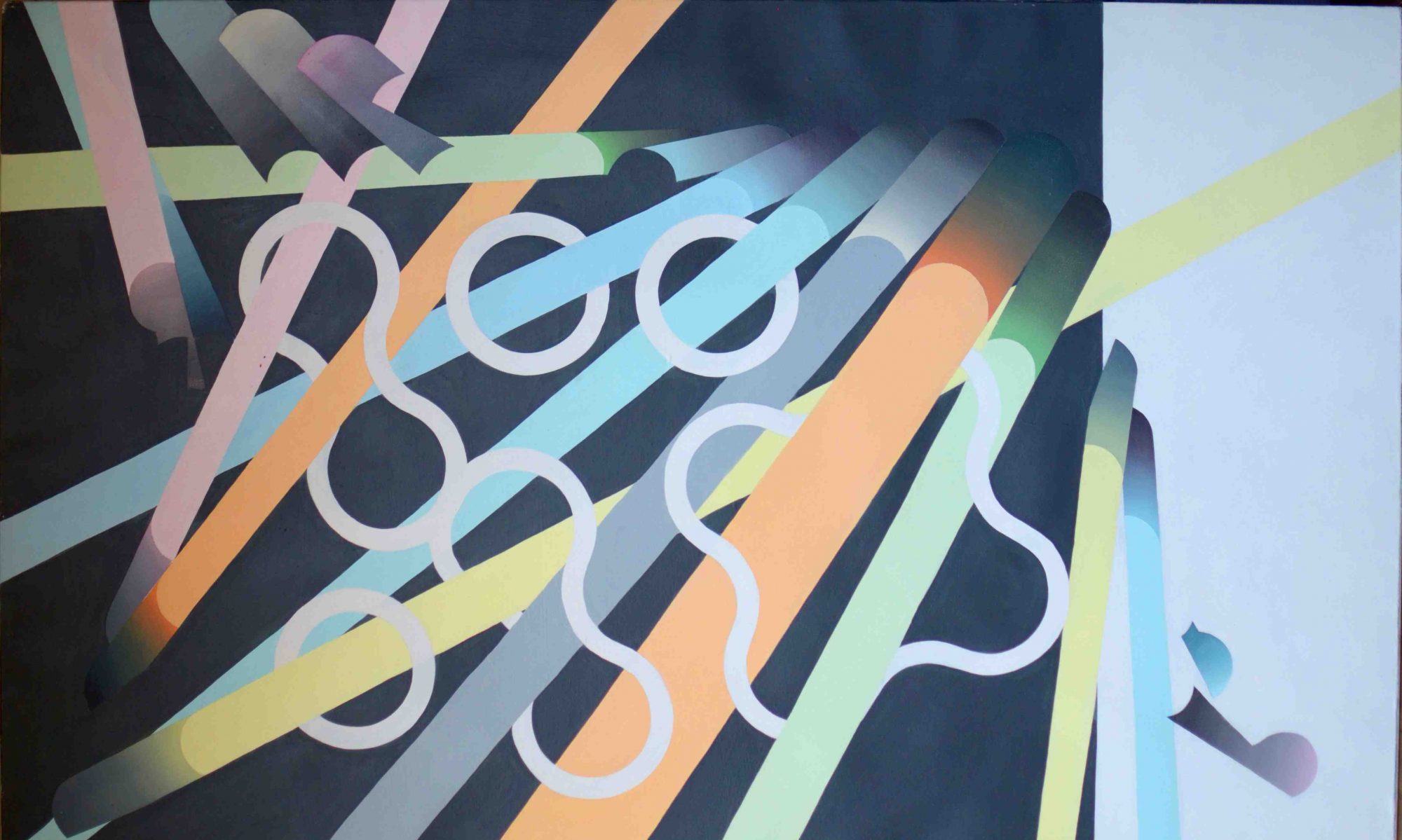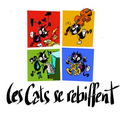11 décembre 2017, Cats News, Les Cats se Rebiffent, Côte Sud Fm 90.3, par Bernard Labat, à propos de l’album S-clave
Podcast à écouter et extrait à lire
Cacher
9 décembre 2017, Cats Références, Les Cats se rebiffent, Côte Sud Fm 90.3, par Bernard Labat, à propos de l’album Circonflexe
Podcast à écouter et extrait à lire
“c’est un jazz ouvert, qui propose, c’est un jazz qui remue”
Cacher
3 septembre 2017, Chromatique.net, par Aleksandr Lézy, à propos de l’album S-clave
Lire
“En cette année 2017, Chromatique se rappelle au bon souvenir de Ô-liostére, ce groupe français de la région parisienne qui nous avait gratifiés trois ans auparavant de Circonflexe, un premier album dans lequel le travail autour de la clave (le rythme et l’instrument !) tenait un rôle majeur. Le jeu de mots S-clave montre que la formation n’abandonne pas sa recherche pour ce nouvel effort.
Quelques petits changements sont advenus entre-temps : l’invité chanteur Yéyé Toon et son scat font dorénavant partie intégrante du line-up, bassiste et claviériste ont été remplacés et la guitare remerciée … Cela perturbe-t-il l’équilibre du groupe ? Il ne semble pas, bien au contraire. Le départ de la guitare permet à la flûte traversière de Stéphanie Morland d’avoir la place qu’elle mérite au sein de la formation, prépondérante et centrale avec la batterie de Lionel Feugère. Ahmed Ossama à la basse prend part de manière importante dans les compositions qui se voient ainsi plus incisives et percutantes, marquées par des rythmes complexes et tortueux. La nature du style musical développé n’en est pas pour autant modifiée. On retrouve ce jazz latin prédominant et ces incursions insidieuses dans la case « progressif ». C’est coloré, rebondissant et mélodique à la fois. Cependant, la production manque légèrement de relief, tout sonnant sur le même plan.
Ô-liostére donne l’impression d’avancer, de progresser tout en cherchant encore un peu sa voie. Les apparitions de voix ne récoltent pas l’enthousiasme, ce qui est probablement dû à un manque palpable de précision et d’assurance, mis à part sur « Clavicule » . Cela dit, l’originalité que le groupe s’évertue à entretenir commence à récolter ses fruits. Les compositions s’apparentent à de beaux exercices de style dans lesquels l’auditeur a toujours la sensation d’être invité à compter, fredonner, et réfléchir comme sur « Countdown ». Et ça, c’est plutôt bon signe !
Cacher
27 juillet 2017, CultureJazz.fr, par Thierry Giard, à propos de l’album S-clave
Lire
“Le disque est sous-titré « Musiques du Clavistan et pays limitrophes » et il est réalisé dans le cadre d’une association intitulée Culture-sans-Visa. On ne s’étonnera donc pas de l’aspect melting-pot coloré, plein de vie et d’humour que prend la musique du groupe Ô-Liostère. Une vision actuelle du jazz qui ne s’embarrasse pas des contraintes des genres et des conventions et s’appuie largement sur la clavé cubaine. À découvrir sur scène aussi, sans doute…”
Cacher
7th of June 2017, The CerebralRift, by George De Bruin, about the album S-clave
Read
« Ô-liostére is back with a new release called S-Clave. For this release the group has written a new set of compositions that picks up where Circonflexe left off.
Ô-liostére: S-clave
From the opening of Countdown, Ô-liostére makes it clear this is an album that is taking the listener on a journey. The playing on this release is wonderfully tight, the ensemble is completely on point, with a fiery infectious energy that takes the listener completely out of their surroundings. Every time I start this release I just sit back for those first four minutes, unable to do anything but listen to this track.
The second track, Del Mundo, relaxes things a bit: a Latin tinged track that picks of the groove from the first track, but goes in a very different direction. The only criticism could be that the vocals aren’t quite up with the musicianship of the rest of the track. However they are not a distraction from the overall beauty of the track.
Another one of my “just stop to listen” moments occurs on Back 2 Bach. The arrangement of a well known piece of Bach’s work is engaging in ways that really showcase the abilities of the group. Chopped up rhythms, parts alternating between synthesizer, flute and electric piano along with the scat-vocals are impossible to ignore.
Fusion
The word “Fusion” came to have some fairly negative connotations in the Jazz world in the late 1970’s and early 1980’s. It was used as a term used to describe pop-oriented jazz music, and took on a connotation of watering-down to jazz purists. But, I would argue that Ô-liostére makes good on the concept jazz fusion. Their music is more progressive, while verging on pop-style in arrangements.
However, there is also a sensibility to their music that puts it in the category with the Modern Jazz Quartet: these are studied, accomplished musicians that willingly cross and explore styles and genres of music. They fuse them into their own style. Their arrangements are exceptional, and the performances are stellar. But above all of this there is joy in their music that transcends all of the technical aspects of the arrangements, recording and engineering.
There is one final criticism I could make of this release, however it isn’t a fair criticism. I always want to hear more from this group. Any good jazz ensemble can easily leave me longing for more. In this case, I am not just wanting more, but always looking forward for what new invention they are going to come up with next. The anticipation is a killer.
But I know this is an unfair comment: the work that has gone into producing this release is considerable. And, I know that one of the things that is different with jazz ensembles is how they record: all of the instruments at the same time, it’s more like capturing a performance than trying to use the studio as an instrument with overdubs, and tons of other technology advancements. It’s pure music and pure performance. So, instead, I will just have to wait for their next release to be this captivated again,
Conclusion
Ô-liostére is the jazz version of a super-group. However, in their case they take all of their technical skills, influences and abilities and fuse them into a single performing unit. More than that, they take a real joy in performing together. I often think to myself that there isn’t a lot of music or groups that I want to go out to see these days (I generally go to smaller, local shows because they are more fun and interesting than any of the major label groups / artists). However, if Ô-liostére were performing somewhere I could get to, I would be there in a heartbeat. This is a group that I know would put on a good show, their enthusiasm shines through their music on this release and given these arrangements it would translate well to live performance.”
Hide
29 mars 2017, Emission On n’arrête pas le Prog, Radio Canut, à propos du morceau Countdown (S-clave)
Lire
« […] Groupe actuel, ça sonne un peu Canterburien sur les bords, il y a une flûte sympa […] »
Podcast complet (Ô-liostére à 50’58”)
Hide
28th of Octobre 2015, The CerebralRift, by George De Bruin, about the album Circonflexe
Read
There are a lot of really good EDM, Rock, Pop, Ambient, experimental and a wide range of music styles being released under Creative Commons licenses these days. However, there are a few styles that aren’t as widely represented, mostly Jazz and Classical music. Fortunately for me, Magnatune is doing a really good job of plugging the gaps in these styles. Oliostere: Circonflexe is an excellent example of the high quality music that is being released by this label/
Oliostere: Circonflexe
Circonflexe refers to the accent marking over vowels in some languages (French comes readily to mind). It’s use carries several different meanings, like changing the pronunciation of some vowels, or indicating the presence of a silent ‘s’, or distinguishing between two homophones. In other words, it’s usage doesn’t follow a strict set of rules, and can change given the context of it’s usage.
In the case of this recording, the Circonflexe is seen as being analogous to the establishment of multiples claves, or rhythmic patterns.which unite the music within the songs. Sometimes the claves used on this recording are simple, such as the opening track 1232; while other cases are complex and often polyrhythmic constructions.
And, while it would probably be a lot of fun to dissect the rhythmic and melodic elements of these songs, that’s not what most people are going to listen to. So, what is the best way to describe this release? Well, there is an classic jazz album that immediately comes to mind as the father (or grandfather) for this release: Time Out by The Dave Brubeck Quartet. While hailed as being one of the ultimate cool-jazz releases, this record featured songs like Take Five and Blue Rondo ala Turk, which quickly burn themselves into your memory for their rhythms and melodies at the same time.
Oliostere has picked up where Dave Brubeck left off, penning eight tunes that are easy to listen to despite some being fairly complex in rhythm and structure. It’s the effortless combination of rhythm and melody on tracks like Tirades and 1232 that burn themselves into your memory, and make you tap your feet or bob you head with them.
Jazz music has often found fascinating depths in claves, and various rhythmic devices over the years. this is a release that celebrates that fascination, and picks up on many of the classic elements that have made these types of tune fun to listen to. It’s kind of lick getting an education in rhythm while not realizing that you are learning anything. Which is cool, and it’s the key to the success of this album.
Another key to the success of this release are the guest artists: Olivier Koundouno on Cello on MMM, and YéYé Toon’s vocals on Daga Dit Gouda and Polymophisme. Both artists bring a lightness and extra element of fun to the proceedings (especially love the scat work of Toon on Daga Dit Gouda).
Conclusion
Jazz and Classical music are well under-represented in the Creative Commons world. Fortunately for those of us that love these styles, Oliostere: Circonflexe makes an excellent edition to fill in one of these gaps. It’s just a lot of fun listening to the rhythms and polyrhythms on these tracks, and the fun the musicians are having playing these tunes. They will stick with you in the same way that Take Five or Blue Rondo ala Turk have stuck with us for so many years.
Hide
08 avril 2015, chronique de chromatic.net par Aleksandr Lézy, à propos de l’album Circonflexe
Lire
“Pourquoi un diacritique comme le circonflexe a-t-il autant d’importance dans la langue française ? Parce qu’en l’occurrence, il modifie le son d’une lettre héritée de l’alphabet latin. Ce n’est donc probablement pas un hasard si Ô-liostére a doté la première lettre de son nom d’un tel accent et appelé son premier album Circonflexe. Comme une lettre peut être modifiée avec un accent pour changer sa sonorité, une note de musique peut aussi être modifiée suivant la manière de la jouer. Ô-liostére pratique la modification des genres et réalise avec ferveur un melting-pot de jazz et de rock progressif lorgnant vers le Canterbury de manière très personnelle. Formé en 2007, le collectif est vraiment marqué par l’empreinte de chaque musicien. Cela se ressent énormément à travers la qualité des rythmes, des ambiances et des diverses apparitions successives comme une course de relais par équipe. On retrouve une imposante section rythmique très complice et trois mélodistes à la guitare, à la flûte traversière et au piano, auxquels s’adjoignent le furtif violoncelle et une voix, controversable. Malgré une part d’improvisation exécutée principalement dans les axes de solo, c’est surtout la partie écrite qui se ressent davantage et qui impose sa force. La savante musique d’Ô-liostére s’embourbe parfois dans l’exagération d’une complexité mécanique. La recherche est réelle mais il manque pourtant un petit sentiment d’âme supplémentaire et une ligne directrice plus assumée. A noter le particulièrement bon « MMM » ! ”
Hide
2nd of September 2014, ProgArchives, by oliverstoned, about the album Circonflexe
Read
[PROG ARCHIVES intends to be the most complete and powerful progressive rock resource. You can find the progressive rock music discographies from over 6,000 bands & artists, over 30,000 albums (LP, CD and DVD), almost 200,000 ratings and reviews from more than 30,000 members who also participate in our active forum (http://www.progarchives.com/forum/).]
“Ô-LIOSTERE is a young french band that i had the chance to discover as first part of a DIDIER MALHERBE concert. I was very impressed by their live performance so i was looking forward a studio release. Here it is, “Circonflexe” is their first record, released in 2014.
Ô-LIOSTERE does not try to sound vintage 70’s. We’re here in the vast musical territory of today jazz: the receipt here is mix of modern jazz, freejazz, the whole blended with a hint of world influences (hear the vocals on “Daga dit Gouda”) and the add of flute makes the band originality. The band has its roots definetly into free, improvised jazz (STEVE COLEMAN, MAGIC MALIK, AKA MOON) and we can hear sometimes the slight world-oriental influence of AVISHAI COHEN. Talking about a prog (jazz) band with flute leads to comparisons with classic vintage bands. The flute work here is reminiscent of canterburyan bands such as HATFIELD & the NORTH, THE MUFFINS, thanks to a mellow but agile sound. The opener, “1232” is a convincing tune featuring great flute/guitar work, helped by a solid, speedy and powerful rhytmic section. I must precise that the drum sounds dry and quick, reminding that the band is more on the jazz side of the fusion mix. ”2 virgule 4″ is another great tune in the vein of “1232”: excellent fluid guitar parts, light keyboards and delicious airy flute interventions make that number the most accomplished piece. It may remind of somehow of NATIONAL HEALTH but without the spacey side and a more straithforward-today-fusion- sound. Same for “8 plus 7”, while “Polymorphisme” differs from the add of cello and the use of keyboards that add some instrumental diversity to the mix. The whole record is nicely accomplished, especially for a first album. I hope to hear from them again soon. A promising band! ”
Hide
23rd of August 2014, Culture Jazz, par Thierry Giard, à propos de l’album about Circonflexe
Lire
“Où l’on retrouve Lionel Feugère, percussionniste dans “Le Monde est Petit” (ci-dessus), cette fois à la batterie dans un contexte “fusion” plus électrique avec le groupe Ô-Liostére. Une formation qui n’est pas sans évoquer certains des mythes de la période “rock-progressif” des années 70-80 (Soft Machine et consorts) dans la façon d’installer des climats propices aux improvisations (on remarquera la guitare d’Éric Epstein) sans pesanteur rythmique excessive. Jeune formation à suivre sans doute…”
Hide
9 Juillet 2014, Blog Nova Express, à propos du disque Circonflexe
Lire
“Excellent.”
Hide
2nd of April 2012, ProgArchives.com, by Oliverstoned, about the first part of Didier Malherbe & Eric Löhrer on 1st April in l’orangerie du chateau de Breteuil (78)
Read
“The first part of the concert (the band “Ô-liostére”) was surprisingly good, very prog to my ears, canterburyan in mind, leaded by very good guitar and a charming female flutist. The keyboard was very nice as well, using vintage organs effects. Even the rhytmic section was good. I’ll try to get in touch with them in order to add them to PA, if they are interested in. Their music evoked the Muffins to me(in less complex) while my buddy Christophe compared them to Larry Coryell and Sweet smoke.”
Hide


